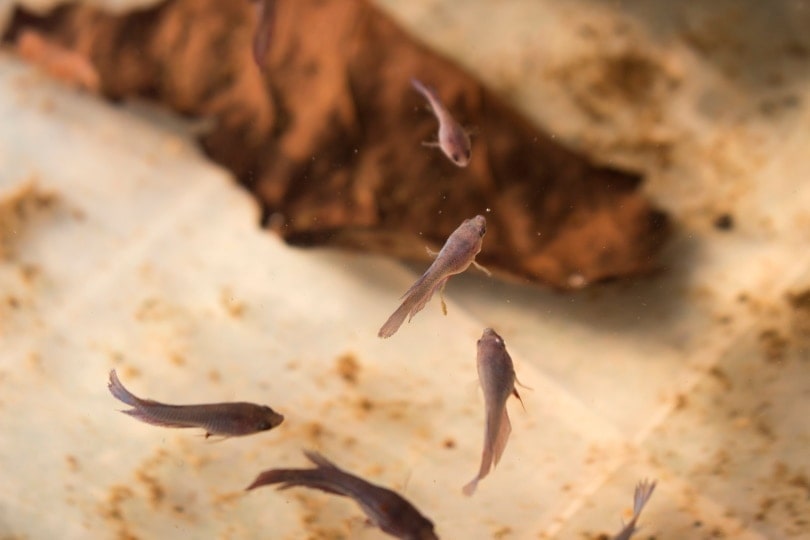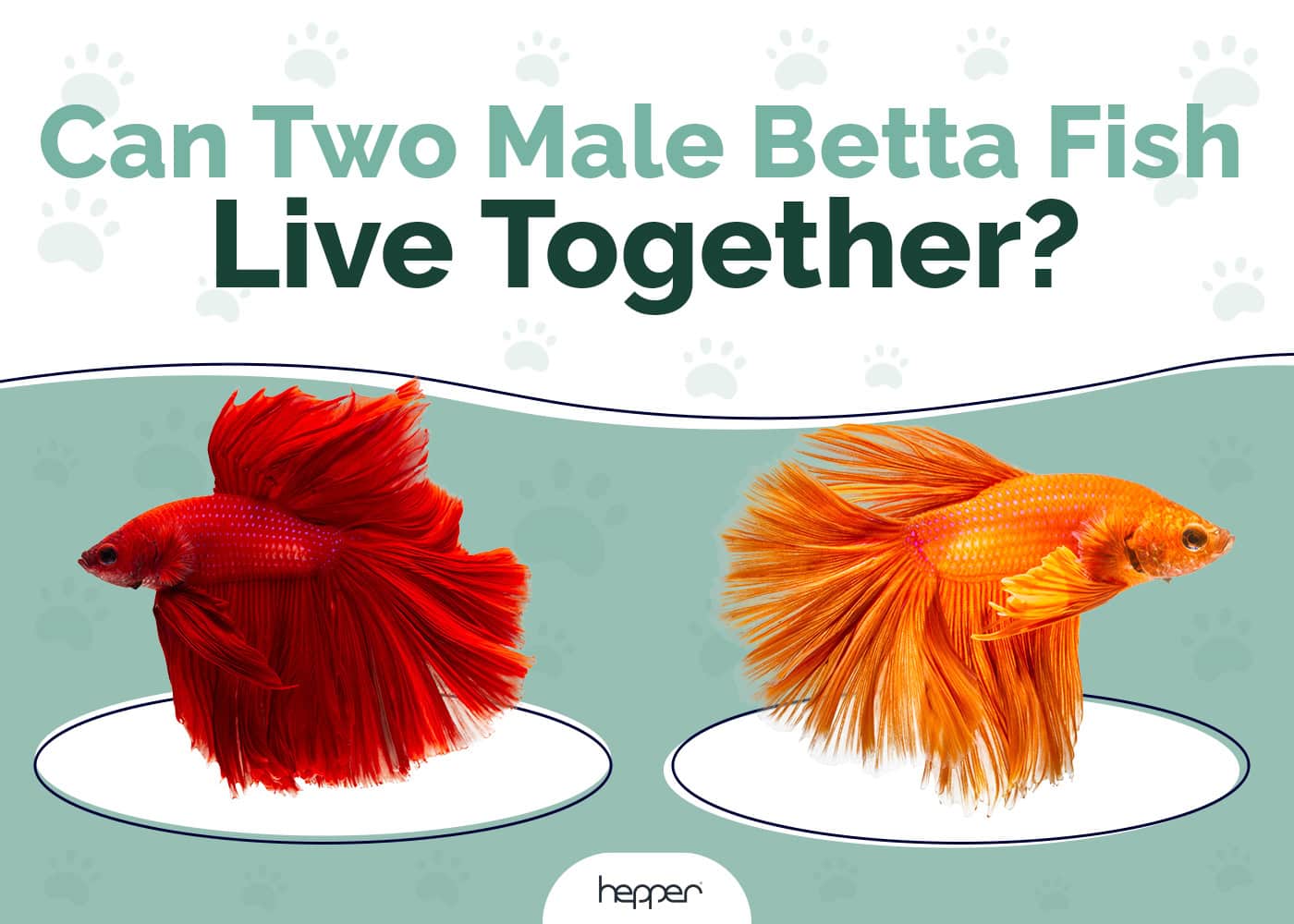How Long Do Eclectus Parrots Live: Vet Reviewed Average Lifespan, Data & Care
Updated on
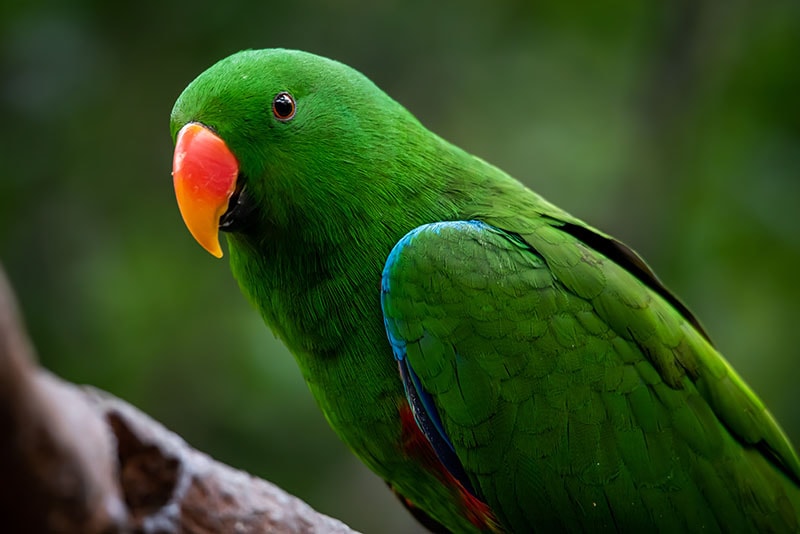
Click to Skip Ahead
The eclectus parrot stands out from their fellow psittacines on several scores. The most apparent is the extreme sexual dimorphism or appearance variation between the sexes. Usually, male and female parrots look very similar. This species breaks the mold. The reason has an ecological basis. However, it hampered the proper identification of the bird since scientists thought they were two different species.
Eclectus Parrot’s Average Lifespan
The eclectus parrot is a popular pet bird, and the wildlife trade, as well as habitat loss, has taken a toll on their numbers. Nevertheless, the International Union for Conservation of Nature and Natural Resources (IUCN) classifies them as a species of least concern.1 Fortunately, they are easy to breed in captivity. Most pets are from this breeding stock. However, it provides an example of the varying lifespans of the species.
The eclectus parrot can live between 23 and 28 years, although improved care has upped the average figure to around 30 years in captivity. The maximum age documented is 40.76 years.2 Nonetheless, it’s dependent on care, diet, and a bit of luck, as is true with any animal. Let’s contrast these numbers with wild birds.
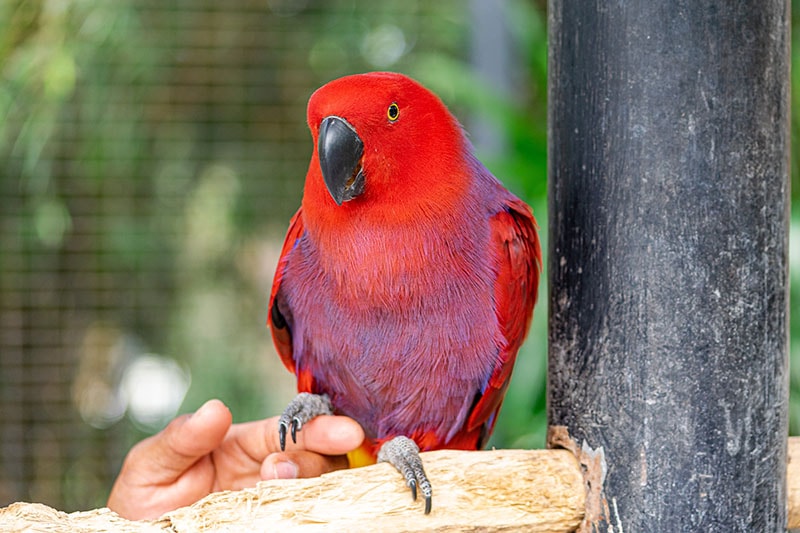
How Long Do Eclectus Parrots Live in the Wild?
Determining the exact age of wild species is problematic, especially for animals that live in seemingly impenetrable habitats such as rainforests. Nevertheless, the maximum known figure for wild birds is 50 years, although it is on the high side. You’d think it would be considerably less with the threats of predation, young mortality, and the wildlife trade looming.
How to Care for Your Eclectus Parrots for a Long Lifespan
A long lifespan should be the goal of any pet owner. It’s challenging to provide everything an eclectus parrot would get with their 740-acre average home range. Luckily, the pet industry has improved immensely, making it easier and more affordable for enthusiasts to provide the best of everything for their birds.

Feeding & Diet
Perhaps one of the main obstacles to reaching the maximum lifespan is diet. The eclectus parrot is an herbivore in the wild. However, their diet is wide and varied, with the bounty of the rainforest supplying it. They’ll eat various foods, including seeds, nuts, and grains. They’ll also consume a large amount of fruit. Their beaks are shaped to facilitate it. Some extend their diet to nectar, buds, and flowers, though.
This diet is challenging to replicate in captivity. It should include plenty of fresh fruits and vegetables. You can also offer a species-appropriate pelleted diet. These birds have relatively long GI tracts, making a low-fat and high-fiber diet essential for optimal health. Providing enough B-carotene to produce vitamin E is essential, as they have high requirements for this vitamin. They can also be sensitive to additives in the diet. These parrots are also somewhat wary of new things, which can make introducing different foods challenging.
Environment
The eclectus parrot is an active bird that manages to keep itself occupied as long as there are things to do. Their cage should be the largest you can get for your space, with a minimum size of 4 cubed feet. You should also add toys and perches for mental stimulation and enrichment. Perhaps another reason some pets fail to thrive in captivity is simply boredom. That sets the stage for feather plucking and toe-tapping.
The latter is a curious behavior that experts suspect is stress or diet-related. Adding some hiding places in the cage can provide some welcome cover for a rainforest species.

Care
Exercise that includes time outside of the cage is essential for eclectus parrots. You should give your pet appropriate items to chew to satisfy this urge. This bird also requires daily interaction. They are social animals in the wild and will even form flocks. However, you should avoid harsh words when interacting with your pet. Positive reinforcement works best.
Cleaning
The diet makes daily cleaning imperative for your bird’s health. You should remove uneaten food promptly. Parrots aren’t the tidiest of pets. Things you give them rarely stay in the bowl. You should clean the entire cage weekly. We also suggest inspecting any toys or other items inside the cage. Remove any that are falling apart as well.
Pairing/Breeding
Feeding your bird a healthy diet is essential for breeding. You must have a large cage to accommodate the pair. These birds nest in tree hollows in the wild, which is a limited resource in their natural habitat. That helps explain the biological control this species seems to have over the sex of their offspring, referring to them being able to pick the sex of their offspring.
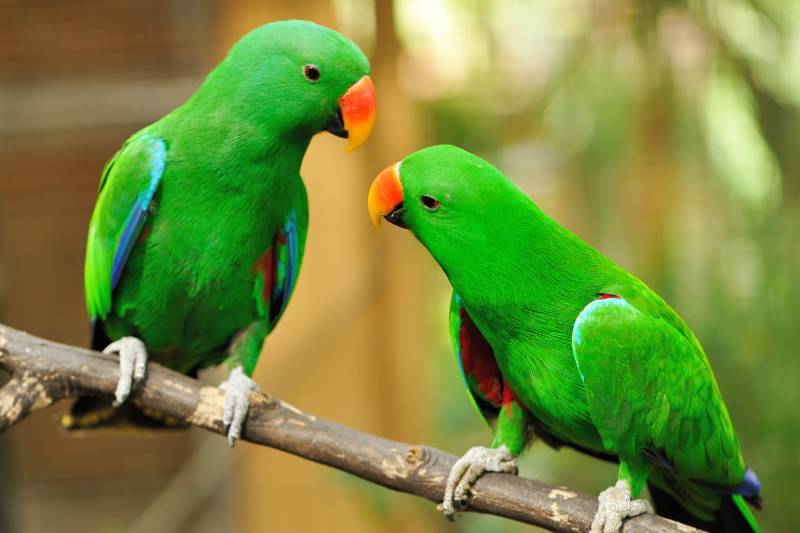
Healthcare
We recommend annual exams for your pet bird with a vet who specializes in parrots. Prevention is far easier than treating an illness. You should keep your bird’s cage in a room that isn’t drafty. The precaution applies to direct sunlight since these animals can’t sweat to modulate their body temperature.
- Loss of appetite
- Lethargy
- Feather plucking
- Puffed up appearance
- Drastic changes in behavior
The 3 Life Stages of an Eclectus Parrot
1. From Eggs to Hatchlings
The eclectus parrot is a seasonal breeder with a season that runs from April through December, with geographical variations. Parental investment exists between the female and male. The female incubates up to three eggs, while the male feeds her for the 28-day period. He will continue this even after the birds hatch.
2. Young Birds
The young are born completely helpless or altricial. The parents will continue to feed and care for the hatchlings until they fledge around 13 weeks. This longer time isn’t unusual for intelligent and long-lived species with a relatively high amount of parental investment.
3. Sexual Maturity
The young eclectus parrots become independent around 6 months old. However, they won’t reach sexual maturity until they are 3 years old, when the cycle will begin again.
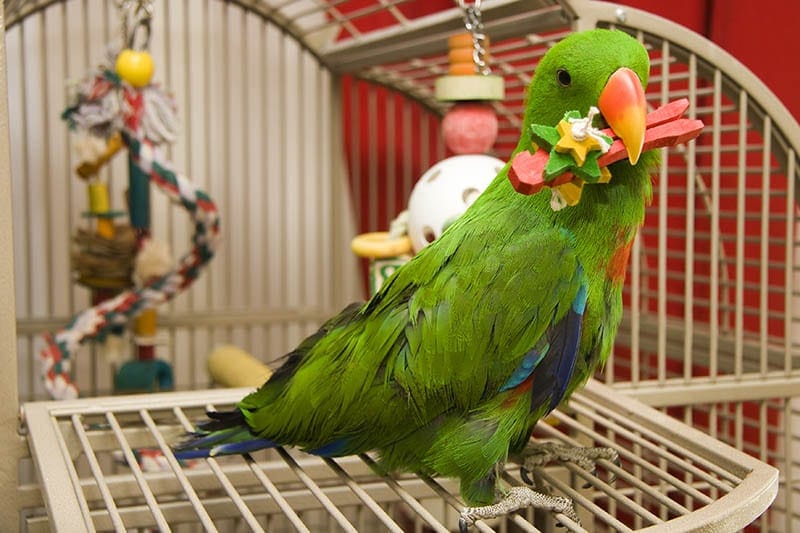
How to Tell Your Eclectus Parrot’s Age
It’s difficult to age an eclectus parrot after they have reached adulthood. Much depends on the care the bird receives. A pet that hasn’t had an ideal life may seem older than their actual age. Luckily, many birds are hand-raised, giving you an exact birthdate and age for your parrot.
Conclusion
The eclectus parrot is a beautiful bird with a large following of enthusiasts. They differ from many other species, which makes them both desirable and challenging as a pet. Suitable living quarters with enrichment and a healthy diet are vital for ensuring your pet lives to their maximum lifespan. Your parrot will reward your efforts with their friendly and gentle nature.
Featured Image Credit: Anish Daryani, Shutterstock







